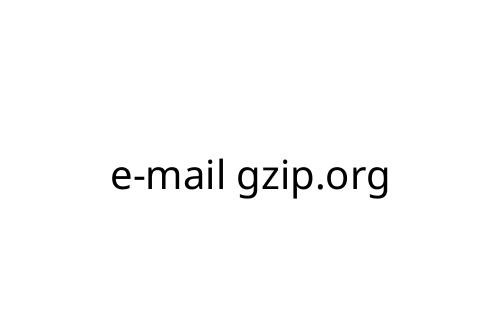e-mail gzip.org
If you work with large amounts of data and need to share files over email, you may have run into limitations with attachments. This is where e-mail gzip.org can be useful. Gzip.org is a resource dedicated to the gzip file compression format. Using gzip, you can shrink files to a fraction of their original size, making email transfers faster and more reliable.
What is gzip.org?
Gzip.org is the official source for the gzip compression tool. Gzip (GNU zip) is a widely used, open-source software for file compression and decompression. It works best on plain text files, but you can use it for many kinds of data. The website offers downloads, documentation, and guidance for anyone who wants to compress files using this format.
Why Use gzip for E-mail Attachments?
E-mailing large files can be slow and sometimes impossible if you hit size limits. Compressing those files with gzip can help:
- Smaller Attachments: Gzip can reduce file sizes dramatically, making your email transmission faster.
- Reliability: Smaller files are less likely to be rejected by mail servers with strict limits.
- Data Integrity: Compression means fewer network interruptions when sending files.
- Bandwidth Savings: Both the sender and receiver use less data.
How to Send gzip Files over E-mail
-
Compress the File:
Download and install gzip from gzip.org if it’s not already on your computer. Use a simple command in your terminal likegzip filename.txtto compress a file. For Windows users, there are GUI tools or ports available. -
Attach and Send:
Attach the compressed.gzfile to your email like any other file. Mention in your message that the recipient may need to use gzip to decompress it. -
Notify the Recipient:
Not every recipient is familiar with gzip. Sending a brief note with a link to gzip.org can help, so your recipient knows how to open and decompress the file.
Pros and Cons
Pros:
- Effective compression for text and data files
- Open-source and free to use
- Widely supported on UNIX, Linux, and compatible with Windows/Mac utilities
Cons:
- Not ideal for already-compressed formats like JPEG or MP3
- Some email users may be unfamiliar with gzip files
- Additional step required to decompress after download
Tips for Using gzip with Email
- Best for Tech-Savvy Users: If your recipient isn’t familiar with command-line tools, consider using a zip utility with a GUI, or guide them to helpful instructions on gzip.org.
- Check Email Policies: Some email services block .gz attachments as a security precaution.
- Label Attachments Clearly: Use clear file names and explain the contents to the recipient in your email body.
Final Thoughts
E-mail gzip.org isn’t a service for direct email—rather, it’s a resource for learning about effective email compression. Applying gzip to your email workflow is straightforward and can be a major benefit for sharing large text or log files. If quick, reliable delivery of sizable files is important, investing a few minutes to learn about gzip.org will pay off.

